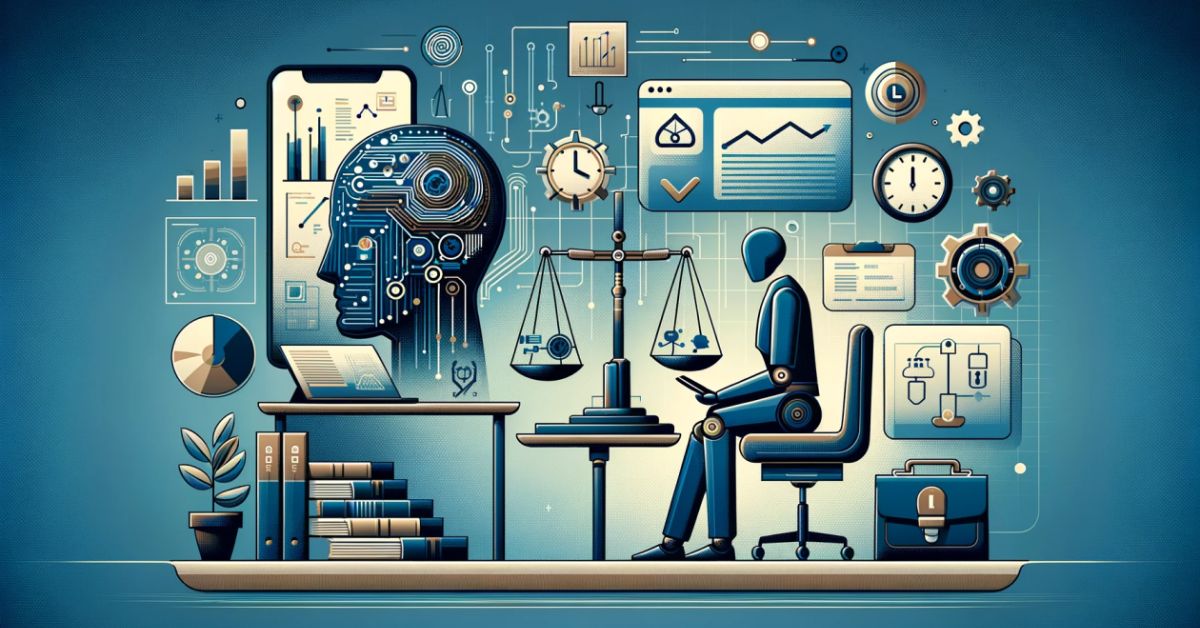Embrace it—AI is no longer a science fiction film buzzword; it’s integrated into the everyday fabric of our lives. Whether your phone unlocks through facial recognition, your home smart hub spitting out answers, or your go-to streaming site recommending your next binge-fest, artificial intelligence is at work. But as wonderful as all of this is, getting into the world of AI also comes with a healthy dose of ethical questions and unknowns.
Here in this article, we’re going to delve into the amazing things that AI is doing, the not-so-obvious ways in which it’s transforming our lives, and the conversations that we must have about its ethical influence. Grab a cup of coffee in hand and let’s discuss.
AI is everywhere—You just might not notice it
I have a friend who recently interviewed, and as she was preparing for her interview, she mentioned to me that the company was employing an AI-driven system to sift through candidates. That made me realize something. AI is not all about robots or self-driving cars—it’s transforming industries behind the scenes.
In the field of medicine, AI is facilitating physicians to analyze medical images quicker and more precisely. In finance, it’s identifying patterns of fraud that even experienced analysts might miss. And in advertising, where I personally spend most of my working day, AI software helps predict customer behavior, personalize adverts, and even generate content. A good example of one of the coolest pieces of software I’ve come across in recent years is an AI image generator that turns text inputs into images—yes, it’s like magic.
But there’s more than gleaming hardware. AI also saves time and makes things more accurate, especially in data-heavy industries. Consider customer service bots smart enough to resolve your problem without making you wait on the phone for an hour. Or predictive maintenance software in manufacturing that identifies issues before equipment fails. These are marginal improvements with a giant ripple effect because they show up on the edge of your consciousness but aren’t quite visible.
The less glamorous side: Ethics and responsibility
And of course, it’s not all rainbows and innovation. There’s a very real side of AI that we have to talk about—the ethical part. Let’s start with bias. If the data that the AI is trained on contains biases, then the AI itself will end up duplicating those biases. We’ve seen this happen with facial recognition technology that mistakenly identifies people of color, or job screening software that unfairly discriminates against specific groups.
And then there is the issue of privacy. AI systems learn from data—your data. How that data is gathered, stored, and used isn’t always clear. Just consider how much your phone knows about you. Creepy, huh?
The second one is job displacement. As AI gets better, there’s bound to be fear about whether it’s going to take away jobs from humans. And true enough, it’s a reality that some jobs will become obsolete, but new ones are being invented—jobs that value creativity, strategy, and humanness. That’s where we have to shift our mind: instead of fearing AI, we can start thinking about how we can work together.
Finding the balance
So what do we do now? The answer is responsible innovation. We have to keep inventing and learning, but with the appropriate guardrails. That means multidisciplinary teams designing AI, having strong data privacy practices, and systems being audited for fairness and lack of bias on a regular basis.
If you’re that kind of person who’s only just starting to grapple with AI tools, here’s my advice: be curious. Experiment with them. Whether a chatbot, smart assistant, or image generator, learning how those systems operate can give you the feeling of power and competence. Don’t worry about asking questions or questioning your information’s uses.
And if you’re in a role where you’re making decisions about using AI in your business, think of it as a partnership. Let the technology handle the repetitive tasks so your team can focus on the creative, strategic, and human parts of the job—the things that AI just can’t replicate.
Wrapping up
Artificial intelligence is powerful. There’s no debate on that. But it’s up to us—developers, users, business owners, and everyday people—to make sure we’re using it responsibly. It’s not about being perfect or having all the answers from the beginning. It’s about the right questions, being educated, and having transparency.
The future of AI is not scribbled. And the best part? We get to open it.
If you’ve been on the fence about exploring AI tools or just trying to understand the bigger picture, consider this your invitation. The world of AI isn’t something to fear—it’s something to navigate, thoughtfully and together.
Also Read: Xlecz: The Future of Data Analytics and Artificial Intelligence

